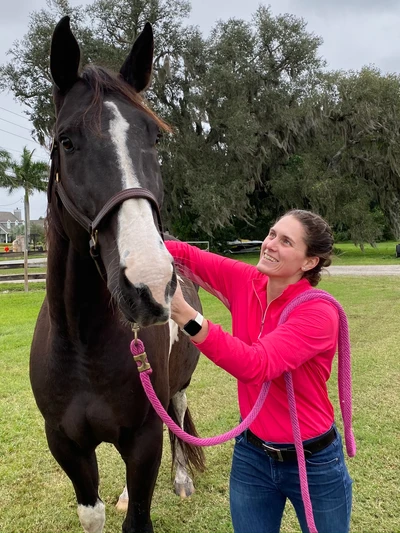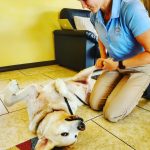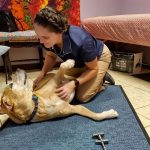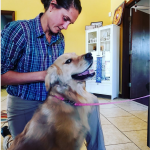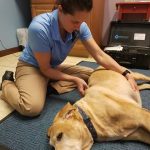Animal Chiropractic is the real deal for our pets that are out of alignment. Dr. Ashley Mincey has trained in human Chiropractic as well an Animal Chiropractic. She is absolutely an expert in the field in our area. I have been very impressed with the adjustments, trigger point therapy and muscle/facial release she has given our most recent patients just this week. Every patient has shown great improvement!
ANY and EVERY dog should have a chiropractic adjustment. All dogs play hard and are so adrenaline driven that they often cause misalignments they cannot communicate to you. Arthritis sufferers and active working dogs are also great candidates as well as performance or show dogs. Chiropractic care will help your dog perform at his/her best, pain free. Adjustments balance the body and allow compensation for painful areas to improve. Call to schedule an appointment today!

